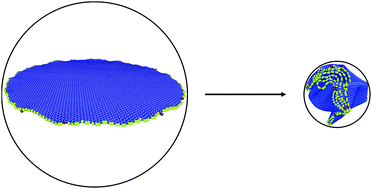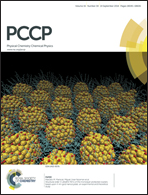Mechanics of graphyne crumpling
Abstract
The recent capability of synthesizing large-scale crumpled graphene-related 2D materials has motivated intensive efforts to boost its promising applications in electronics, energy storage, composites and biomedicine. As deformation of graphene-related 2D materials can strongly affect their properties and the performance of graphene-based devices and materials, it is highly desirable to attain subtle control of reversible wrinkling and crumpling of graphene. Graphyne, a 2D lattice of sp2- and sp1-hybridized carbons similar to graphene, has remained unexplored with respect to its crumpling behavior. Here we employ molecular dynamics simulation to explore the behavior of graphynes under geometric confinement across various temperatures, sizes, and crumpling rates and compare them to graphene under the same conditions, with a focus on the mechanical stabilizing mechanisms and properties of the crumpled structures. The lower density of graphynes creates less deformation-induced bending energy than graphene; as such the graphynes exhibit a markedly increased propensity for stable crumpling. It is also shown that the crumpled 2D carbon materials demonstrate the hardness and bulk modulus of an equivalent magnitude with crumpled graphene, with the most important behavior-determining factor being the number of linking sp1-hybridized carbons in the material. Our results show that irrespective of the initial geometry and crumpling rate, the final structures present intriguing and useful properties which can be incorporated into crumpled graphene structures.


 Please wait while we load your content...
Please wait while we load your content...